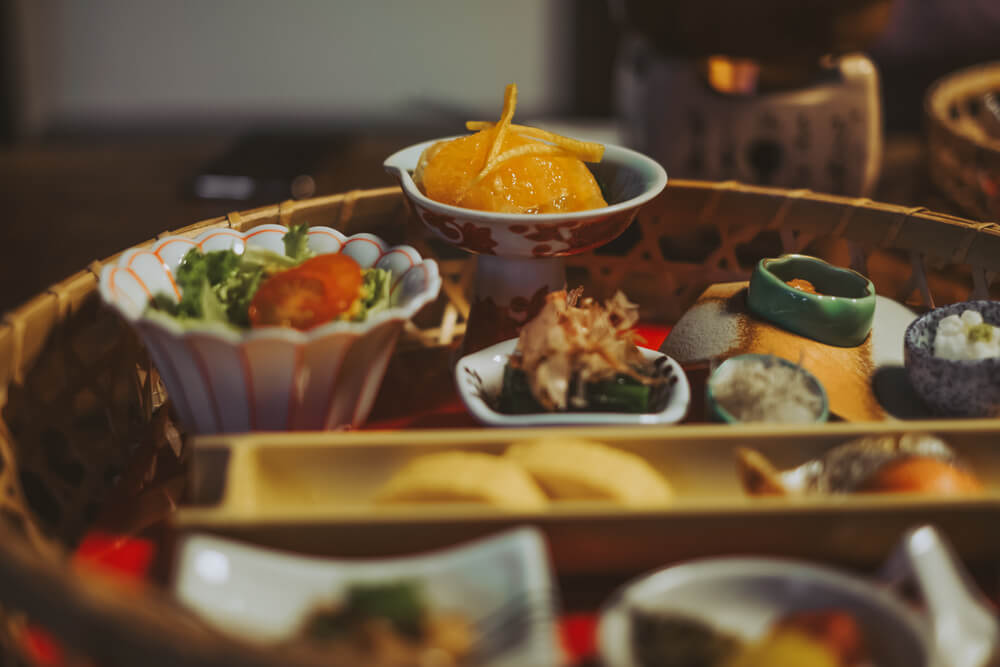What is Omakase: A Culinary Journey of Exquisite Tastes
Embark on a gastronomic adventure where artistry meets cuisine – welcome to the world of omakase. Experience a unique Japanese cuisine dining journey by entrusting the chef’s expertise to curate a bespoke menu.
But exactly what is omakase? “Omakase” directly translates to “I’ll leave it up to you.” In dining, it means entrusting the chef to prepare a meal based on their expertise and preferences. Typically, the chef selects the finest seasonal ingredients and crafts a unique dining experience based on their philosophy and tastes.
In this blog, we’ll explore the origins, pronunciation, dress code, and differences between kaiseki and omakase. Join us for unique Omakase dining.
Its Origins: What To Know
In Japanese, “omakase” means “to entrust” or “I’ll leave it to you.” This concept originated in sushi restaurants, where customers let the chef decide on their meal based on the freshest ingredients available. Over time, it has evolved into a broader concept and can be found in various Japanese restaurants.
In recent years, omakase has gained popularity across the globe as food enthusiasts seek out authentic and unique dining experiences. It’s no longer just a meal but an artistic journey that leaves a lasting impression on your taste buds.
Keep in mind that due to the quality of the ingredients and the various courses that Omakase have, the prices are more elevated than a normal sushi experience. You will enjoy for various meal courses crafted especially by the chef.
How to Pronounce Omakase?
For those wondering about pronouncing the Japanese word お任せ, it’s “oh-mah-kah-seh.” The emphasis is on the second syllable, and the “o” at the beginning is pronounced as a long “oh.”
Next time you’re dining at an omakase restaurant, impress your fellow diners by confidently pronouncing this word.
What to Wear to Omakase Dining?
Although there is no specific dress requirement, omakase is considered upscale dining, so it is recommended to wear smart casual or appropriate attire. You don’t have to wear formal clothing, but please refrain from wearing shorts, T-shirts/tank tops.
Another thing to remember is the use of perfume or other cosmetics with strong odors. Avoid wearing anything with a strong smell is recommended to be respectful to the chef and other diners. This is because strong smells can alter Japanese food’s delicate flavors.
In many omakase restaurants, you will sit at the counter in front of the chef, giving you an up-close view of the culinary preparation. Dressing appropriately shows respect and helps create a more enjoyable and comfortable dining experience.
Kaiseki vs Omakase: What’s the Difference?
At times, Omakase and kaiseki are mistakenly used interchangeably, although they have distinct meanings. Here are the main differences between them:
- Omakase: A culinary adventure guided by a skilled chef who creates a custom menu using the finest seasonal ingredients and catering to the diner’s preferences. Additionally, the chef can modify future courses based on the diner’s response to the food. Omakase emphasizes the chef’s creativity and skill in delivering an unparalleled dining experience.
- Kaiseki: At its core, it is a traditional Japanese dining experience encompassing a meticulously crafted multi-course meal. Rooted in the traditional Japanese tea ceremony, kaiseki embodies a multi-course meal that follows a meticulous sequence, showcasing the seasons through carefully crafted dishes. It emphasizes balance, harmony, and reverence for nature’s bounty.

Experience a Unique Meal With Us at Taki Omakase
Omakase transcends dining; it’s an art form that celebrates culinary craftsmanship that immerses diners in an experience beyond the ordinary. Prepare your palate and embrace the elegance and allure of omakase dining. Allow the chef’s expertise to guide you through an extraordinary culinary journey, where each dish is a masterpiece meticulously crafted for your enjoyment.
Also, if you don’t feel like attending a restaurant, you can have the experience at home with the at-home Omakase option.
At Taki Omakase, We offer a selection of sushi, nigiri, sashimi, and other delicacies crafted just for you by our experienced chefs. We are the only omakase restaurant in Boca Raton and Delray Beach, Florida, with Michelin-quality food and service. Come and enjoy the best experience in South Florida. Book your experience today!
